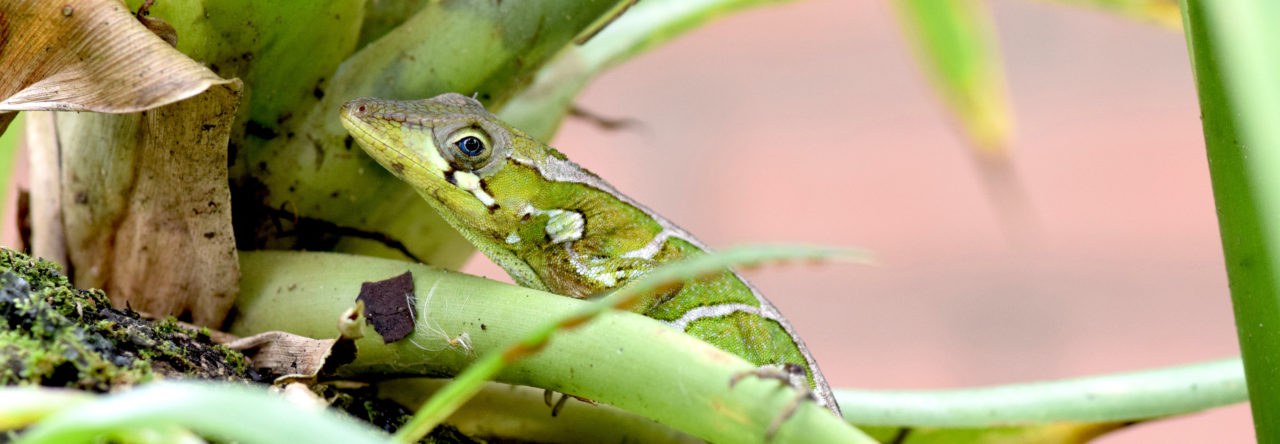Today’s Island of the Day is actually a set of three islands that make up The Cayman Islands: Little Cayman, Grand Cayman, and Cayman Brac.
Little Cayman is a quiet little diving community with less than 100 residents, made up mostly of expats and people who run the hotels that host the tourists attracted by some of the best diving and snorkeling in the Caribbean. When I was there, we met some locals who gave us a tour of the island and we circumnavigated Little Cayman in about 20 minutes by car. We saw the endangered Cyclura caymanensis on the northern side of the island, in a spot where they congregate for tourists to feed them. As far as Anolis go, Little Cayman has Anolis maynardi, a very long-snouted green anole. They also have a red-dewlapped population of Anolis sagrei that Jason Kolbe showed is more closely related to populations of A. sagrei on Cuba than they are to populations of red-dewlapped A. sagrei on Grand Cayman.
The Western arm of Grand Cayman, the biggest island, feels a little bit like South Beach in Miami, with expensive resort hotels, boutique shopping, and a rocking beach and nightlife scene. As you go farther east, you find the the classic Caribbean dry forests growing among the karst outcroppings. The endangered Grand Cayman Blue Iguana, Cyclura lewisi, has a remnant population in and around the botanical gardens on the east end of the island. This species is not blue like Anolis gorgonae but it does have a bluish-green sheen depending on how the light hits it.

The Grand Cayman Blue Iguana
(photo from the Wikipedia page)
Anolis conspersus is notable on Grand Cayman – it is related to A. grahami from Jamaica but has evolved a beautiful purplish-blue dewlap, very different from A. grahami’s yellow dewlap.
Cayman Brac feels like Little Cayman, except that it is bigger, has a few population centers, and is dominated by a bluff that grows from nothing in the west to a towering 150 feet in the east. During hurricanes, people living on Cayman Brac used to climb up to and take refuge in caves that weave back into the bluff. We spent some time on Brac looking for a cryptic invasion of Anolis sagrei sagrei into the endemic Anolis sagrei luteosignifer population. That project is ongoing in the lab. It was fun to work there and we met many friendly people.
For more on Cayman herps, check out: CaribHerp.org.












